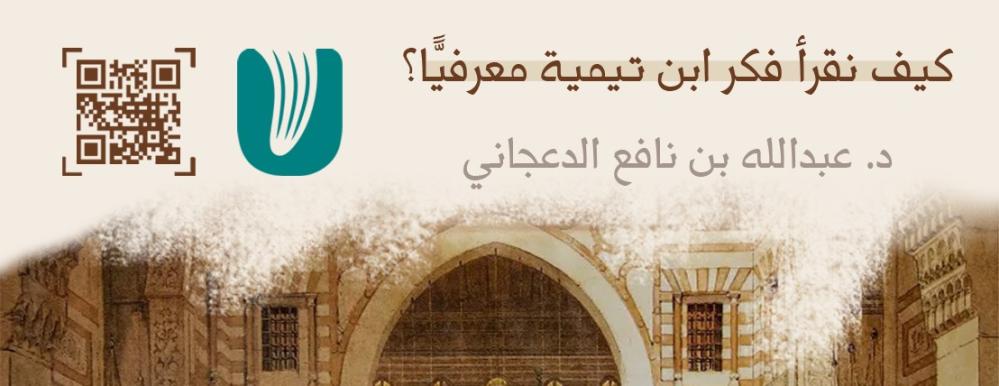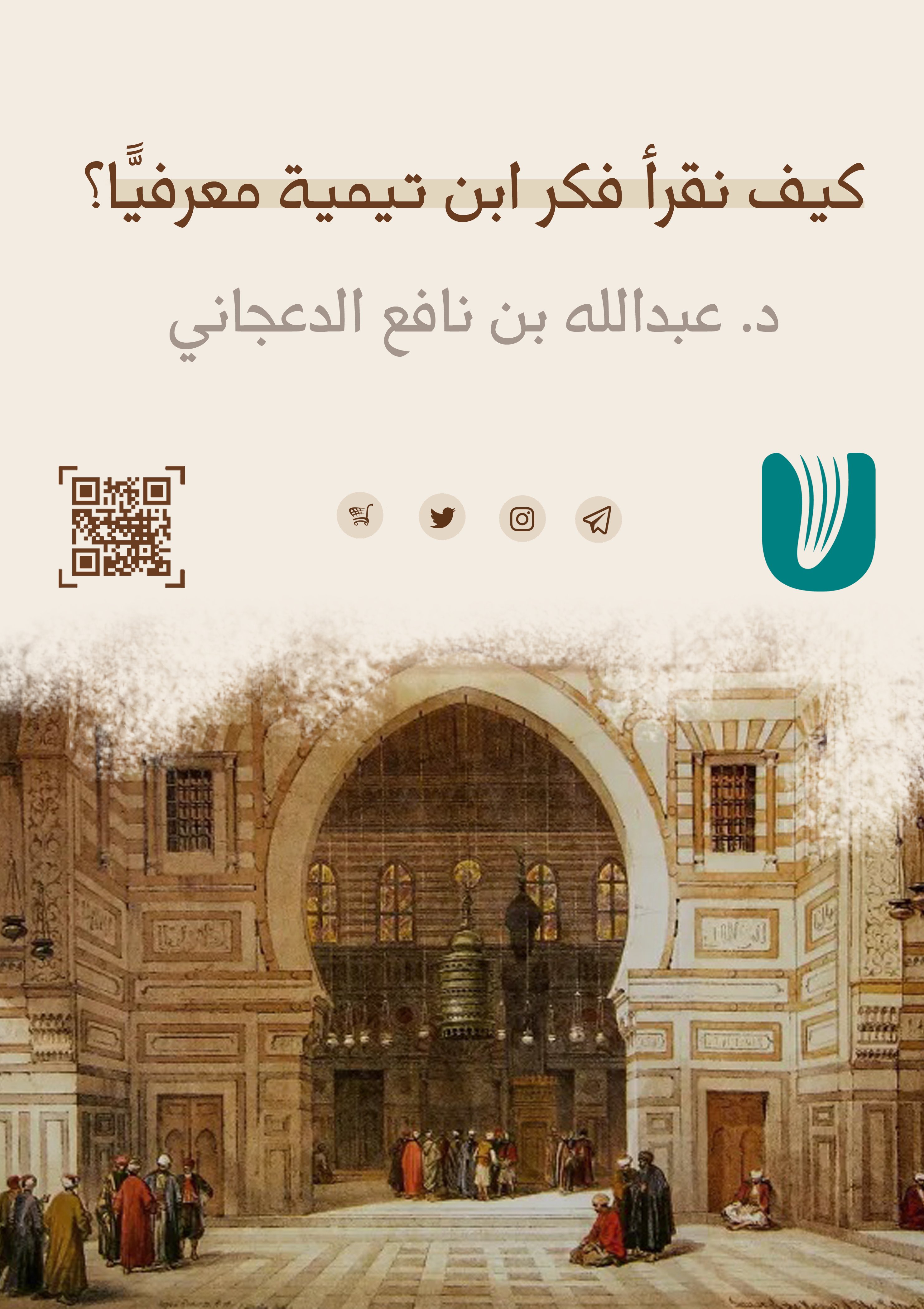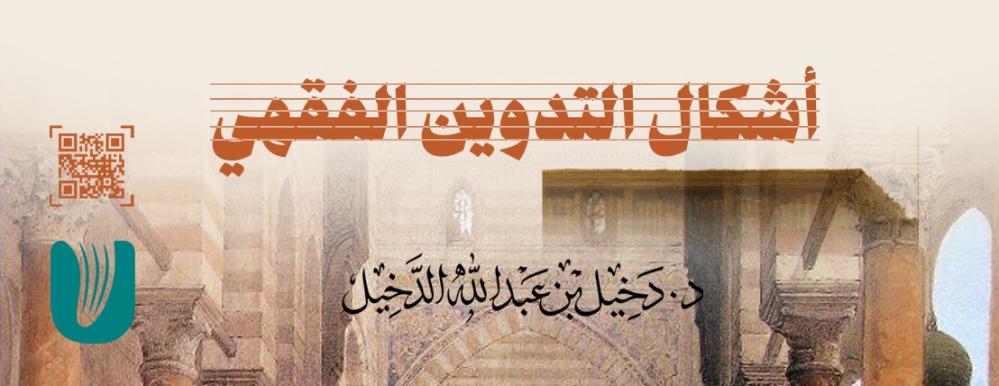How do we read Ibn Taymiyyah’s thought cognitively?
Dr. Abdullah bin Nafi Al-Dajani
If we want to read Ibn Taymiyyah’s thought, interpret his opinions, and understand his scientific agreement, and if we want to exploit his strengths and draw inspiration from his methodological visions, we must follow his cognitive system - what is meant by the system here: interconnected, interacting, distinct elements that form a single system - and this can only be done with scientific analysis. of his positions, ideas, and concepts, and to capture the central concepts that have the ability to be systematically interpreted, and then recombine and compose those concepts, until we reach the comprehensive cognitive concepts that lie behind that enormous scientific heritage, diverse in positions and issues, that can be organized and recombined by means of those comprehensive cognitive concepts.
In this study, I have analyzed the legacy of Ibn Taymiyyah, trying to find out the scientific reasons that he explains, linking similar issues and common positions into a similar scientific reason or reasons, consciously abstracting from this huge amount of issues, positions, details, facts, frameworks, patterns, or... Holistic concepts.
In light of these comprehensive cognitive concepts, which have the ability to interpret texts and reality consisting of situations and issues, I constructed a new structure for research, which includes the processes of analysis and synthesis, generating some concepts, perhaps discovering new facts, and solving some contemporary philosophical problems that are of interest to the researcher in thought. And belief.
This methodological method chosen for research is completely consistent with his methodological vision, which seeks to build scientific theories in which the details are explained by referring them back to their universal origins. He emphasized its necessity, saying: “Man must have universal origins to which the particulars can be traced, so that he may speak with knowledge and justice, and then know Particles How did they happen? Otherwise, he will remain in lies and ignorance in the particulars, and ignorance and injustice in the universals, and great corruption will be born.” (Majmu’ al-Fatawa 19/203). In another place, and with the same clarity, he refers to that methodology, saying: “Knowing the origins of things and their principles, knowing religion and its origin, and the origin of what it generates.” It is one of the most useful sciences, for unless a person acquires knowledge of the facts of the things that he needs, he will remain in his heart with sorrow” (ibid. 10/368).
The search for comprehensive principles and central concepts to understand the nature of things and explain facts is a methodological necessity and a scientific need. Ibn Taymiyyah strictly adhered to it in his scientific productions, reports and criticisms, and I tried to adhere to them in my studies of his method, while leaning towards a comprehensive view appropriate to the nature of the cognitive method, in every way. This is in order to avoid “cognitive sluggishness,” and falling into what Ibn Taymiyyah referred to as “ignorance in particulars,” “injustice in universals,” and “anxious epistemological confusion,” arising from confusion and confusion in understanding the facts of things.
This approach led me to capture the cognitive framework of Ibn Taymiyyah, which consists of three comprehensive concepts, which represent the gateway to understanding his cognitive approach, and upon which his cognitive system revolves, which are as follows:
The first concept: cognitive instinct
It is a foundational concept, as within the framework of this concept human knowledge is established, and through it the mental and psychological cognitive functions of the self can be identified, and this concept is considered a necessary and certain reference for knowledge, from which knowledge construction begins, where it stops, and to which it returns, whether this is in criticism or otherwise. In the report, in scientific argumentation, or in debates.
This overall concept includes several central concepts, which will be explained and their methodological impact explained - God willing - at the heart of the research, including, for example: “psychological feeling,” “cognitive certainty,” “active and emotional psychological phenomena,” or as Ibn Taymiyyah calls them: “Sensory, inner, emotional matters,” such as the theoretical nature of the mind and its practical nature.
Although this concept is the basis of the applied cognitive approach, it tends more to theory than to procedure, unlike the following concept, as it aims to describe and identify the roots of knowledge within the human psyche. Therefore, this concept was the link between the cognitive approach and psychology. The concept of nature and science Each of them attempts to identify the tools and personal abilities that enable the human soul to know things, in other words, to determine the paths and sources of knowledge. Here the cognitive approach - as a cognitive nature related to the human soul - meets psychology, but with a difference between them in analysis and goal, while it penetrates Psychology Within the labyrinths of the psyche, the cognitive approach awakens to the objective reality in which the psyche lives, and while psychology is not concerned with the results of inferences and their evidence, the cognitive approach aims to achieve and control them.
The second concept: cognitive realism
What is meant by it is to take into account reality and existence with balance. Reality is either a physical existence, or it is a symbolic existence. Material existence is either present and a witness, or it is absent. As for symbolic existence, it is represented by “linguistic texts” as symbols of things, whether they are Spoken or written.
Reality has methodological importance in Ibn Taymiyyah’s critical thought, and if that reality - whether witnessed, absent, or symbolic - raises philosophical and intellectual problems, then for him it is a revealer of ambiguous truths, then through this concept his ability and accuracy in understanding the cognitive reality surrounding him appear.
But reality in the philosophical concept is not settled, but is disputed by different approaches. Platonic idealism sees reality as represented by realizing the existence of ideals outside the human mind, and making it the basis for the existence of tangible things. Realistic idealism interprets reality by stating that universals have an existence independent of the things they represent. There are other realities according to Visions and the nature of science. (The Philosophical Dictionary 2/552)
All of these ideal realisms are false, and have no basis in true reality, as they have sunk into formalism and idealism, and yet they claim realism, such as “Pythagorean” idealism, or Platonism, or Aristotelianism, or Sufism. Therefore, Ibn Taymiyyah’s realism came in response to those false realisms, as It started from the principle of the independence of existence from our perception, as he states in several places in his books. (The Response to the Logicians, p. 113, Al-Dard’a, 87/1, and Majmo’ Al-Fatawa 138/19).
But he was not immersed in his realism. Rather, his realistic vision was intermediate between dreamy idealism divorced from external reality, and materialism, which sees in existence nothing but matter and its manifestations. This appears in his balance between mental existence and external existence, and that is a central issue in his thought.
If his realism was balanced between the inertia of the senses and the imagination of the mind, then it - also - comprehensive of all reality, was not limited to the material existential aspect, but rather extended to deal with the symbolic reality - as I referred to it - so his realism was of two types:
The first: sensory realism, which has two areas:
A - The field of testimony, and through this realism the relationship between mental existence and external existence is controlled, and because of it the problems of universals and induction are solved.
B - The field of the unseen. In this field, the relationship between the mind and the unseen is determined, and because of it, the problem of the possibility of unseen knowledge is solved, which some philosophers made impossible. Like the German philosopher Kant.
Second: Symbolic linguistic realism, and its field is texts as symbols indicating entities, as the reality of language is that it is a tool for communication with spoken and written symbols, and through that realism the problem of understanding the text and the problem of meaning is solved, and one of the most important features of Ibn Taymiyyah’s symbolic or linguistic realism is “the search for the speaker’s intent.” “It guarantees the stability of meanings, their clarity, and the solution of their problems.
The third concept: cognitive unity
This concept represents Ibn Taymiyyah’s cognitive map, through which he looks at knowledge and existence, according to which he built his cognitive structure and completed it. There is no doubt that only minds with broad understandings and broad horizons possess that concept, which requires unity behind every multiplicity, and under every difference an unsatisfactory coalition. With partial explanations and premature analyses, Ibn Taymiyyah does not have much of these qualities, as seen by everyone who contemplates his scientific approach and cognitive visions.
The “concept of cognitive unity” is almost apparent in every aspect of his cognitive approach, most commonly apparent in what he sees as the harmony between universal laws and legal laws, then cognitive integration, either in the ways of knowledge, or in the compatibility of cognitive nature with moral, religious, and sensory reality. Either in the alliance of thought and language in constructing the meaning that is repeated between them, or in the combination of scientific knowledge with practical knowledge in constructing human knowledge... and thus that concept is evident in many of the positions and cognitive images of Ibn Taymiyyah.
This concept dominated his cognitive thought, and he often justified his scientific positions by saying: “The evidence and proofs of truth cooperate and support each other, not contradict or conflict” (Preventing the Conflict of Reason and Transmission 248/6), and in the context of his comment on Al-Razi’s opponents’ rebuttal of his arguments for denying the transcendence of God. He says: “This speech, although it is extremely fair in the debate, contains the perfection of establishing the facts as they are, and demonstrating the correspondence of what was known by necessary rational nature, and by geometric rational calculation, and what the Messengers brought, and the perfection of what God sent His Messengers with in terms of explaining His names and attributes. This is the matter of truth, that it is certain, similar, and not different...” (Bayan Talbis Al-Jahmiyyah 47/4 - 48).
The criterion for achieving facts: realizing their unity and proving their harmony. Because the nature of “existent and intended truth” - in the words of Ibn Taymiyyah, as we will explain it in its place, God willing - is a harmonious and consistent nature that does not accept internal and external dissonance and contradiction. Within the framework of this concept and its dimensions, he discussed the biggest cognitive problems, which is the problem of the relationship between reason and transmission. To which he devoted a large work called “Preventing the Conflict of Reason and Transmission.”
In this way, Ibn Taymiyyah’s cognitive approach was distinguished from many cognitive approaches, which did not take into account the concept of cognitive unity, and were of various types, including:
First: Methods that assume cognitive contradiction in their scientific progress, and attempt to overcome it, such as the approach of those who oppose reason and transmission, from ancient and modern theologians, and in general modern Western thought, in its positions on the relationship of reason to divine revelation.
Second: Methods that acknowledge the cognitive contradiction, and are unable to solve it except through cognitive disengagement, and moving from one intellectual stage to another, with the tax of confusion and confusion, such as what happened to Al-Ghazali, and close to him, Al-Razi, among theologians, and close to that is “modernist thought.” » Which moves through the logic of “evolution” from one stage to another while assuming the contradiction between them, and building the second on the ruins of the first, and therefore “death” was a specter that haunted their ideas, from the death of “God” to the death of “the author” to the death of “literary criticism”.. etc.
Third: Methods that start from the idea of philosophical contradiction, to reach cognitive harmony, such as some Western philosophies. Like Hegel's philosophy.
Fourth: Methods that neglect or overlook that concept, as they are immersed in analysis and do not sense the relationship of the part to the whole, and reality to perception, and are unable to balance the analysis of information and the synthesis of theories, and are unable to distinguish between the truth that the researcher realizes through analyzing its individuals and realizing its unity by composing its individuals, and between Facts represented in scattered data that have no connection.
The exclusion of these approaches from the concept of cognitive unity from their thought may be an intentional exclusion, such as nihilistic philosophical approaches, such as “deconstructive philosophy” (deconstructive philosophy is a critical reading of texts, its goal is to undermine fixed meanings and create a rift between what the text declares and what it conceals. It was founded by the philosopher Jack Derrida,” see: The Guide of the Literary Critic Megan Al-Ruwaili and his Companion, pp. 107-111.), or it is an unintended exclusion, like the approaches of many figures of thought, culture, and Sharia.
Fifth: Methods that do not care about the cognitive and philosophical contradiction, but rather acknowledge it and build on it, such as some Sufi approaches, which recognize the contradiction of revelation with clear reason and authentic transmission (Ibn Taymiyyah referred to this methodological contradiction in his works, such as: The Right Answer 186/3, and Majmoo’ al-Fatawa 338/3), and like the ecclesiastical theological approaches, whose inability to solve the problem of the doctrine of the Trinity led them to admit some of them to accept the contradiction in that doctrine, and justify this by saying that it is “above reason” (see Ibn Taymiyyah’s criticism of them, The Correct Answer 391/4).
Ibn Taymiyyah was freed from the illusions of these approaches, because of the concept of “cognitive unity.” It guaranteed him methodological stability, and he was not known for fluctuation, turmoil, or systematic shift. Rather, this concept bequeathed to him a scientific vision that distinguished him from others. Because realizing unity and achieving cognitive harmony requires more contemplative thinking and deliberate vision, and thus in his analysis of scientific issues he did not limit himself to quick observation, and he did not take captive the terms and questions of his opponents in the context of their discussion, and in that he provided advice to the debaters (see, for example, The Conflict of Reason and Transmission, 296/1), and it was not for false reliability, or what philosophical dictionaries call “dogmatism” (dogmatism has been used since the days of the philosopher, with a connotation that is not devoid of sarcasm, which is its application to accepting opinions without scrutiny. See: The Philosophical Dictionary, Saliba 554/2). . It is present in his methodological dictionary. Rather, he was interested in the philosophy of questioning, fond of identifying the details of problems.
Why were these three concepts determinants of the Timian cognitive system? What are its proofs and evidence?
These three concepts were the subject of questions, problems, and research by everyone who dealt with “human knowledge,” whether ancient or modern, theorists and philosophers. Because it is a true translation of the nature of “human knowledge,” which begins as a self, then interacts with reality, and collides with its problems. In its movement, it requires harmony between its knowledge and its reality, and this cognitive interaction between the self and the outside, and the demand for harmony, is evident in those three “distinct” concepts. “Interconnected” “Interacting”.
The concept of “cognitive realism” is an extension of the concept of “cognitive innateness.” If the first is foundational, through which the cognitive faculties and abilities gifted to humans are recognized and knowledge is formed, then the second concept - the concept of cognitive realism - is considered a continuation of the foundation of that innate cognitive structure. Because it activates the concept of innate nature, and the cognitive abilities it contains, and the faculties gifted to man in understanding reality, it is the cognitive bridge between man and the innate knowledge God has given him, and between reality and existential facts, and this structure completes the realization of the unity of cognitive truth, which justifies that structure and strengthens its coherence. .
Since “Islamic law” is compatible with “human nature,” these three concepts refer to the nature of “Islamic knowledge” and the characteristics of Muhammadan law. Instinct is its basis, realism is its spirit, and “unity” is its goal and logic. Ibn Taymiyyah was illuminated by it, and inspired by it his cognitive and methodological strength, by investing in it, developing it, and employing it in his scientific life, and there is no surprise in that, for from the essence of “Islamic knowledge” he issues, and to it he returns. .
Through my induction into the details of Ibn Taymiyyah’s thought, and applying the methodology of analysis and synthesis therein, it became clear to me that these three concepts control his overall cognitive system and his detailed scientific approach, to which his philosophical, logical, and jurisprudential concepts return, and through which he receives various truths. Such as religious truths, sensory truths, mental truths, and psychological truths, and I clearly distinguish him from others by his systematic attention to them.
Not every concept is isolated from the other. Rather, they converge and combine in the interpretation of his philosophical and logical dimensions. They are organically interconnected. Each concept internalizes the other in an interrelated relationship. This interconnection can end in his interpretation of his cognitive approach to cognitive unity, or to cognitive nature. Or to cognitive realism, as it is not impossible to refer each concept to the other, as will be evident in the multiplication of the study.
But this intertwining and overlapping does not conflict with the internal logic of each concept. The interconnection between these concepts at the level of their manifestations in the structure of the subject does not contradict each concept’s preservation of its own essence and internal relationships. Therefore, I distinguished each concept from the other, with a desire to highlight the units. The basic method, and arriving at the discovery of its internal relationships, including the cognitive and methodological problems it contains. For this reason, I took into account - in presenting these problems - their classification according to the strength of their relationship and their attraction to each concept, as each concept is distinguished from others by its problems that were the subject of discussion by Ibn Taymiyyah.
If we look at the role of these universal concepts from a broader angle and horizon, we find that they have organized the relationship between the major philosophical dimensions, which are: “man,” “the unseen,” “and testimony,” or in other words: “mind” and “metaphysics” (metaphysics traces its derivation to The origin is based on two Greek words: meta, which means: after, and phusika, which means: nature, and its literal translation is: “beyond nature. See: Introduction to Metaphysics, Azmi Islam, p. 7.) and “nature” or “reality”, so the concept of nature Cognitivism deals with man, his mind, and his cognitive powers, and the concept of cognitive realism defines the relationship between man and the worlds of testimony and the unseen, and the concept of cognitive unity arranges the relationship between those dimensions, especially the relationship between man, considering his mind, and revelation, considering it the unseen.
These three concepts carry their justifications and proofs in themselves, which are evident in the contents of the study when it is explained and analyzed, and their greatest proof is what the honorable reader will see of the extent to which the details of Ibn Taymiyyah’s thought are consistent with them, and what he will notice of their explanatory power, and if I wanted to judge it in a strict scientific manner, I would make it “ “A scientific hypothesis,” the truth of which became apparent to me after studying it. The way to verify “scientific hypotheses” is not merely to support them with supporting examples, for such a process is not safe from falling into psychological deception, based on reprehensible selectivity of examples, evidence, and evidence, but the criterion for verifying them is their ability to To falsify, not to believe. Scientific hypotheses are not worthy of acceptance unless they are falsifiable, and unless they withstand the strong winds of attempts to falsify them, with this new scientific logic that the philosopher Karl Popper discovered, and with which he created a critical revolution. I see the truth of my vision of it in my study of thought. Ibn Taymiyyah, after examining it by presenting it according to that criterion, was interested in every example that he could imagine opposing.
These three universal concepts, which defined Ibn Taymiyyah’s cognitive system, are characterized by two descriptions: universality and abstraction. Although they are two interconnected descriptions, what is meant by their universality is their application to a number of issues and situations that share a common destiny, and what is meant by abstracting them is their liberation from space and time, since there is no existence. It has in reality his heritage except in the form of details of positions, individual signs, and specific issues.
He did not stipulate it as a frame of reference for him, but rather - according to my reading - it lies behind the details of his thought, so his methodological reference is mixed with his thought and procedures, and the reason for this is the cohesion of the method and the subject, and the unity of theory and application in his thought, and that is the nature of Eastern culture and mentality, as some researchers see it, in which the method has no independence. About the subject, in contrast to what is seen in modern Western culture, in which curricula arose separate from their subjects, and sometimes even hostile to them. (See: Issues of the Human Sciences, The Problem of the Curriculum, supervised by Youssef Zidan, pp. 45-46).
All of these comprehensive cognitive concepts are due to one final cognitive reference - as I referred to - which is divine knowledge, which Ibn Taymiyyah made the origin and source of sciences, with this final cognitive reference that represents the general existential vision, distinguishing his approach from the rest of the philosophical and verbal cognitive approaches, for instinct leads to it. Unity cannot be achieved without it, and realism perceives it as it is, and what follows from this entry revolves around highlighting that final cognitive and existential reference according to Ibn Taymiyyah.
Click here to access the full book page.
Click on the image to access the image version (pdf), which can be downloaded and published.





